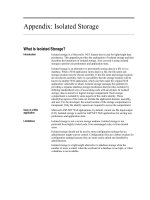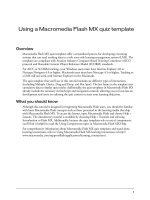Tài liệu Declaring bool Variables docx
Bạn đang xem bản rút gọn của tài liệu. Xem và tải ngay bản đầy đủ của tài liệu tại đây (7.65 KB, 1 trang )
Declaring bool Variables
In the world of programming (unlike in the real world), everything is black or white, right
or wrong, true or false. For example, if you create an integer variable called x, assign the
value 99 to x, and then ask, “Does x contain the value 99?”, the answer is definitely true.
If you ask, “Is x less than 10?”, the answer is definitely false. These are examples of
Boolean expressions. A Boolean expression always evaluates to true or false.
NOTE
The answers to these questions are not definitive for all programming languages. An
unassigned variable has an undefined value, and you cannot, for example, say that it is
definitely less than 10. Issues such as this one are a common source of errors in C and
C++ programs. The Microsoft Visual C# compiler solves this problem by ensuring that
you always assign a value to a variable before examining it. If you try to examine the
contents of an unassigned variable, your program will not compile.
Microsoft Visual C# provides a data type called bool. A bool variable can hold one of
two values: true or false. For example, the following three statements declare a bool
variable called areYouReady, assign true to the variable, and then write its value to the
console:
bool areYouReady;
areYouReady = true;
Console.WriteLine(areYouReady); // writes True









